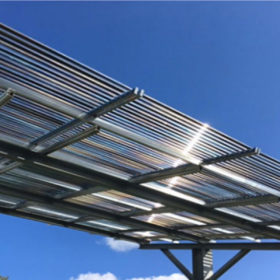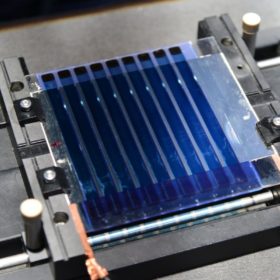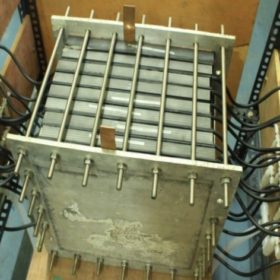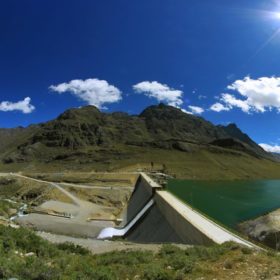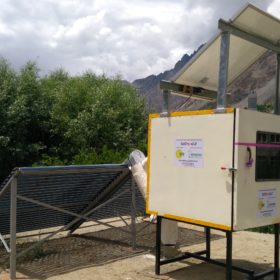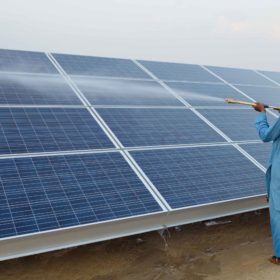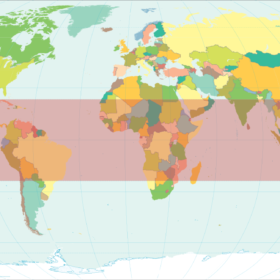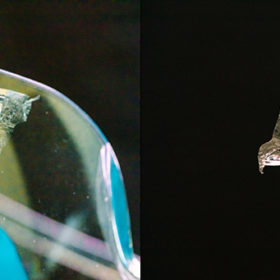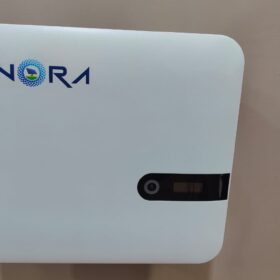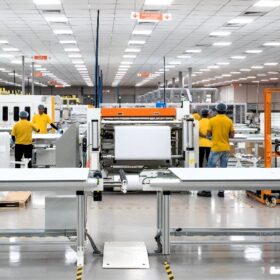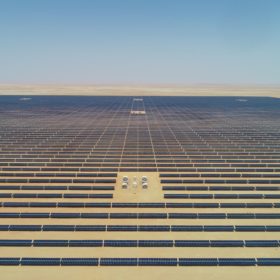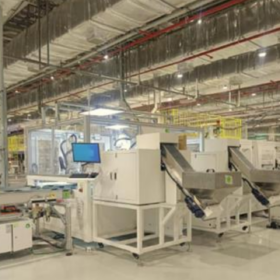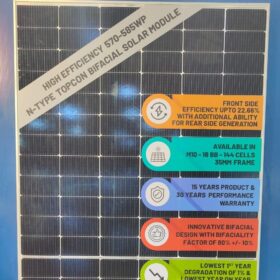Government to fund innovations in solar and battery storage waste management
The Department of Science & Technology (DST) under India’s Ministry Of Science & Technology seeks to fund promising R&D projects in solar panel and battery storage waste disposal and recycling. Call for proposals closes on November 15.
Thin-film agrivoltaic solar tubes
German tech company Tube Solar AG has secured €10.8 million to develop its cylindrical agrivoltaic modules. The lightweight devices could also be used on roofs until now considered unsuitable for PV.
More efficient large-area organic solar cells with spin coating
Researchers in South Korea have used the process to increase performance and the replicability of large-area organic cells. The method was used during film formation to speed up solvent evaporation.
Vanadium redox flow battery for storage of wind and solar power
Researchers in India have developed a 5 kW/25 kWh vanadium redox flow battery with an energy density of 30 watt-hours to 40 watt-hours per liter.
How long will the lithium supply last?
Researchers have sounded the alarm. If no serious efforts are made on second-life battery use, recycling and vehicle-to-grid applications, decarbonization efforts may hit the buffers a lot sooner than expected.
NREL scientists estimate global potential of hydro-linked floating PV at up to 7.5 TW
The U.S. based researchers said linking solar with hydro in a full hybrid system configuration may result – at best – in the deployment of 7,593 GW for an estimated annual power generation of 10,616 TWh and a 20% reservoir coverage. And combining solar with hydro in this way brings further benefits, including improved system operation at different time scales, more opportunities for storage thanks to pumped hydro, increased utilization rates of transmission lines, reduced PV curtailment, and lower interconnection costs and water evaporation.
CSIR-CMERI Durgapur, NISE sign pact on solar research and capacity building
The CSIR-Central Mechanical Engineering Research Institute (CMERI), Durgapur, which has expertise in the design and development of solar artifacts for multifaceted uses, and the National Institute of Solar Energy (NISE), Gurugram, will conduct joint field studies for different solar technologies and work towards skill and capacity building.
Machine-learning for PV module cleaning
French researchers have developed a machine-learning model to clean low-power PV projects and standalone solar arrays in rural areas isolated from the grid.
Over 26,000 register for World Solar Technology Summit tomorrow
The Summit will see the signing of four partnership agreements, including one between India’s Ministry of New and Renewable Energy, World Bank, and International Solar Alliance.
A solar cell so thin, it can rest on a soap bubble
Scientists at Saudia Arabia’s King Abdullah University of Science and Technology demonstrated an organic PV cell that can simply be printed onto a piece of paper. The cell set a new efficiency record for a fully inkjet-printed device, and its designers envisage applications in integrated medical sensors.

